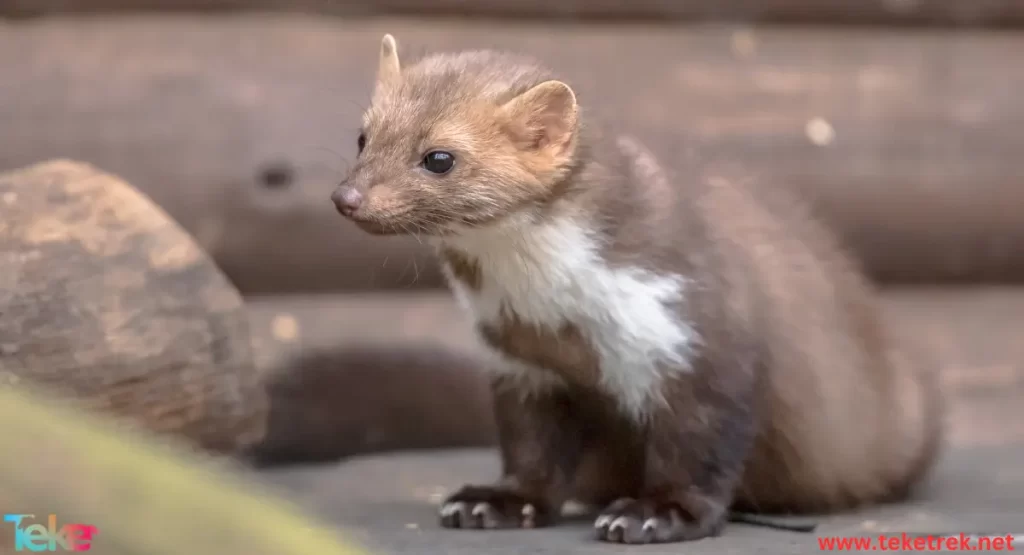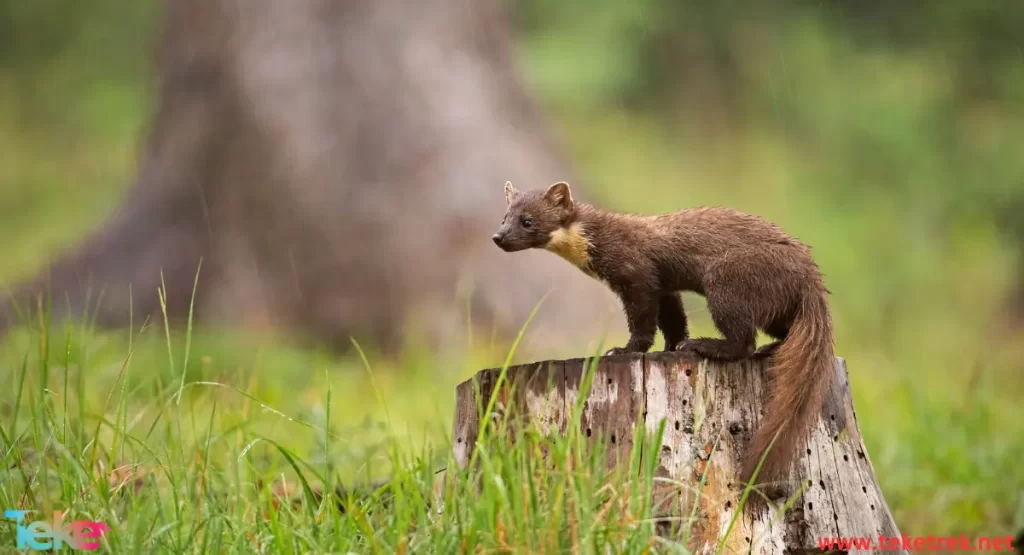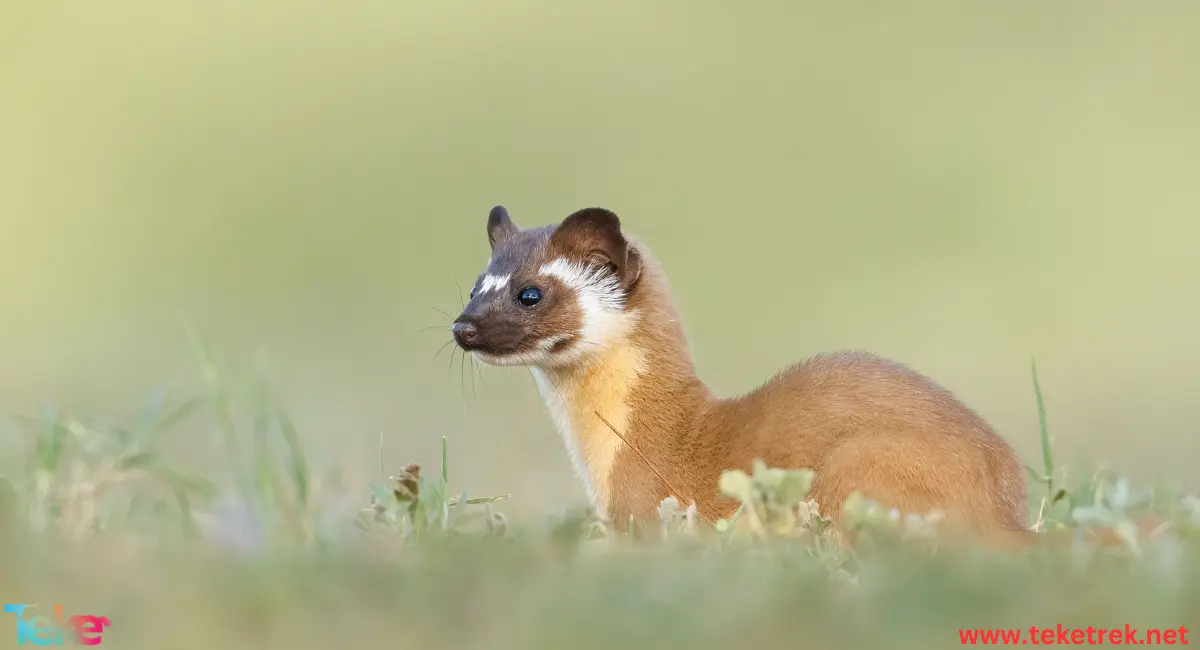The Colombian Weasel, also known as the Don Felipe Weasel, is one of the rarest species that is not widespread.
It is found within limited areas that are also affected by illegal agriculture and deforestation.
The weasel is one of the cute and intriguing creatures that will take you on an enjoyable journey into the world of nature and its secrets. Its soft appearance and unique nature make you want to get to know it more.
In this article from teketrek we will learn together about this exciting creature in terms of its distribution locations, specifications, nutrition, reproduction, and other important details. All you have to do is take some time to read the most important information.

An introduction to the Colombian weasel
At the beginning, it must be noted that the weasel is one of the creatures that has a great ability to adapt and exist in various parts of the world, as we observe the Colombian type of it in Colombia within the provinces of Huila and Cauca, in addition to the neighboring regions of northern Ecuador.
Studies have shown that Colombian weasels prefer to live in locations located on the banks of rivers, streams, and all other natural water sources.
As it wants to live in areas whose altitude ranges from 1,100 to 2,700 metres, which has led scientists to classify it as being located in a cloud forest where the humidity reaches 100%.
The Colombian weasel was not a previously known creature, until a naturalist who loves researching its secrets took a picture of this creature in 2011, which he found in his parents’ house. This picture was uploaded in 2018 on the iNaturalist website.
Scientific classification
As we mentioned previously, the Colombian Weasel is one of the organisms that has received great attention from scientists and experts who have scientifically classified it according to the following:
Scientific name: Mustela felipei
Kingdom: Animals
Phylum: Chordates
Class: Mammals
Order: Carnivores
Family: Mustelid
Bridal family
Genus: weasel
Knowing the scientific classification of this object helps us understand it and know its characteristics more.
What are the characteristics of the Colombian weasel?
The Colombian weasel is known for its cute appearance. It has attractive and unique physical characteristics that we will point out below:
This charming creature has an elongated body that averages about 22 cm in length.
The Colombian weasel has a long tail of up to 11.5 cm, making up about a third of the body length.
The weight of the Colombian weasel ranges between 120 and 150 grams.
Its distinctive colors give it more beauty. Its back is a uniform dark color, while its belly is a light orange color, with the color fading gradually until it reaches the head.
The Colombian weasel does not have any fur on the soles of its feet.
The hair color of the Colombian weasel is uniform and does not contain any stripes or spots.
In the area near the dorsal midline, a swollen auditory bulla is noted.
The wide webbed located on the second, third and fourth toes of the Colombian weasel is characterized by its webbed feet indicating its way of life, adapted to a semi-aquatic lifestyle.
The Colombian weasel has short, black feet.
The Colombian weasel has small ears that range from 15 to 18 mm in length.
The Colombian weasel has an elongated head and neck.
The Colombian weasel lives between 7 and 10 years.
The Colombian weasel eats between 40 and 60% of its body weight each day.
The characteristics we mentioned previously confirm that the Colombian weasel is a unique creature whose presence is a beautiful addition that fills the place with energy and vitality.
Favorite food of Colombian weasel
The Don Felipe weasel relies on meat in its diet. It prefers to eat small marine animals, fish, bird eggs, mice, frogs, and small terrestrial mammals. What helps it do this most is its camouflaged fur and webbed feet.
This small creature determines the location of the prey through its senses of smell and sight, where it jumps on it and kills it with its strong teeth and begins to eat it for meals. What distinguishes him most is that he does not know fear when chasing animals larger than him because of his great ability to adapt and survive.
Reproduction stages of the Colombian weasel
The Colombian weasel is a monogamous animal in specific seasons. Females conceive once each season and give birth to between 4 and 6 young, but it may happen that it conceives twice when there is a good availability of mice that adopt it as food.
The duration of pregnancy ranges between 5 and 6 weeks, and it breastfeeds the young for a period of between 3 and 4 weeks, then the children begin to become independent after 8 weeks, when they can then hunt on their own. It should be noted that female reproduction begins at 2-3 months.
Risks to which the Colombian weasel is exposed
The International Union for Conservation of Nature (IUCN) has listed the Neogale felipel as endangered, as its population has continued to decline. Moreover, the rarity of their sighting and the clearing of forests in known habitats make it difficult to determine the true number of them remaining.
Birds of prey, such as hawks and eagles, constitute one of the most prominent threats facing the survival of the Colombian weasel in its natural range. Although it is characterized by a great deal of speed, its small size makes it vulnerable to predation by these birds in addition to foxes and snakes.
Domestic cats and dogs are one of the creatures that pose a threat to the life of the Don Felipe weasel if it is found near residential areas. Many farmers also resort to hunting it because they consider it one of the dangerous pests that destroy poultry and eggs.

Interesting facts about the Colombian weasel
The Colombian weasel is a solitary animal, as it hunts small mammals on the ground at night and during the day. It is also a territorial animal, meaning it resorts to patrolling within home ranges that vary in size according to the habitat and the availability of food.
It should be noted that although the ranges of males and females usually overlap, they both avoid each other except at mating time.
This small animal builds dens inside the ground in the roots of trees, cracks and abandoned burrows surrounded by grass and fur, where it is a safe place in which it can take a rest. The strength of the Colombian weasel is one of its most prominent characteristics, as it can prey on large animals before returning them to its burrow, thanks to its sharp fangs.
Thus, we have reached the conclusion of this article in which we talked about the Colombian weasel, an exciting animal that forms a unique world of its own. Although the data related to it is limited, it is necessary to protect and preserve it as it works to protect the environment from harmful animals.





